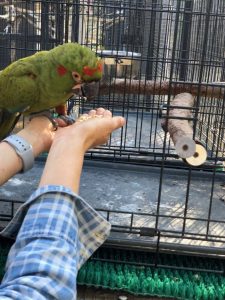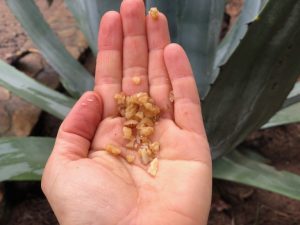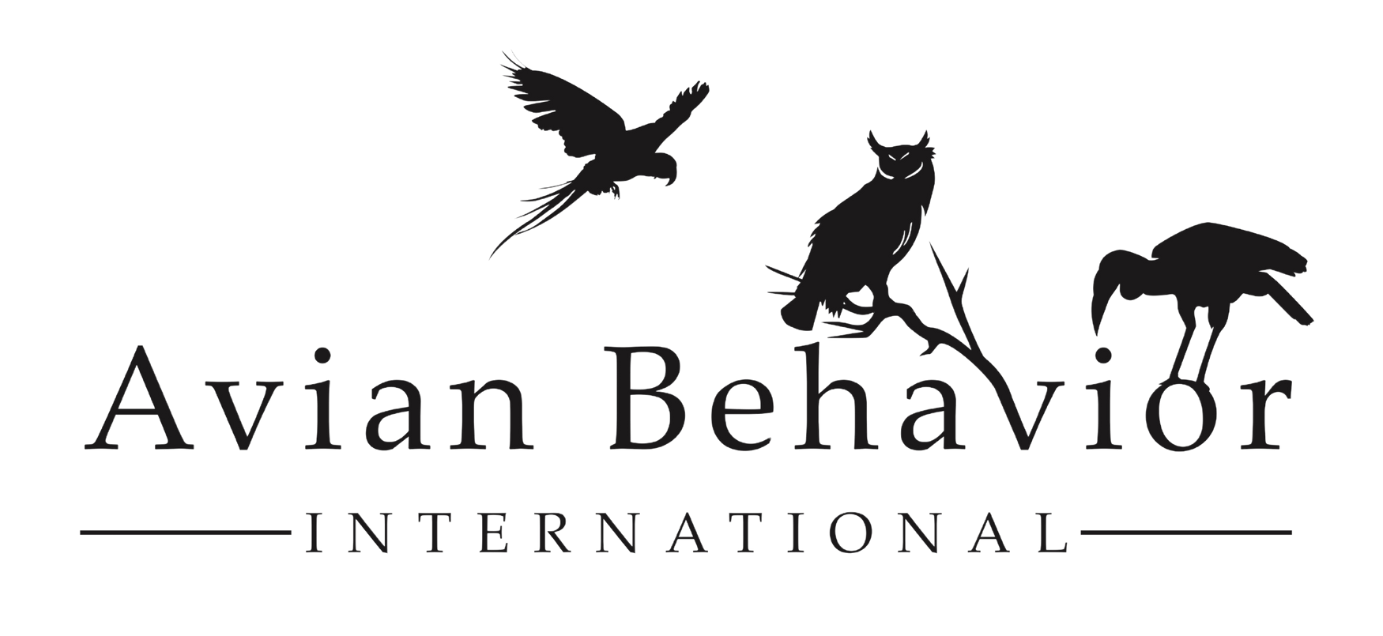
25 May My Parrot isn’t Motivated for Food
What happens when we are excited to start training our parrots with positive reinforcement but they don’t really seem to be motivated to do anything for food? How does one commence training if they can’t even get their parrot to make a move toward the food or he keeps dropping the sunflower seeds we offer him? While it’s true that we don’t always need food treats for positive reinforcement to work, there are many scenarios where food treats help jumpstart our progress with our companion animal to strong secondary reinforcers his is a concept that takes a whole article in and of itself!).
The good news is that all of us are at some point during our day motivated by food to do something: walk into the kitchen, make a sandwich, and essentially change what we weredoing in order to eat. So it is with our birds. How motivated they are depends on a few things in their learning history and diet composition. So let’s start with the simple stuff.
Step 1: Finding the Parrot’s Favorite Foods
The first thing we do is look at what the parrot is eating overall and which items he eats first. We call this reading the bowl. Now, there is a lot that we can go into about diet and nutrition requirements, but to keep our focus on training and behavior, we will stick to the basics. Birds, like the rest of us animals, for the most part favor fat, carbs and sugar. Their base diet is usually pretty high in fiber, and those bits high in the good stuff are the extra good stuff that help them in the breeding and chick rearing season. Every bird has his preference, but the items that typically get eaten first are the nuts, seeds, bananas, and grapes when offered freely. Coincidentally, these are also items that should be fed only in small amounts, if at all.
base diet is usually pretty high in fiber, and those bits high in the good stuff are the extra good stuff that help them in the breeding and chick rearing season. Every bird has his preference, but the items that typically get eaten first are the nuts, seeds, bananas, and grapes when offered freely. Coincidentally, these are also items that should be fed only in small amounts, if at all.
When we find the food items that get eaten first, we remove these from the diet. The idea is not to feed the bird less, but hold these as the desserts, the incentivizers, and use them as training treats. Your parrot does not get these items “for free,” as in, outside of a training session, in its food bowl, toys, or just for being cute. This is because it will devalue the strength of the treat. For instance, in my case, cake with buttercream frosting is a strong reinforcer. I don’t get it a lot because it’s not a healthy treat. Do a few chores for cake? Sure thing! If I got cake three times a day with no contingencies for it, its value would diminish, and at some point, it would no longer be valuable for me to even get off the couch for that reinforcer.
Removing valued food items from your parrot’s diet to use as training treats is important. The composition of the rest of your bird’s diet will also influence your bird’s relationship to food. A diet that contains a lot of people food which usually means it is high in fats, salts and carbs, can not only impact your bird’s health but also its interest in training treats and overall level of energy. A wound up bird is often more likely to flip to overexcitement and thus, biting. Diet can absolutely increase the likelihood of that. Human food, including animal protein, should have a very limited presence in your parrot’s diet and be offered as a very rare treat.
Step 2: Mealtime Management
Another strategy to help increase our parrot’s motivation for our food reinforcer’s is to make sure he is hungry for his next meal. Some parrot owners choose to leave food in front of their birds at all times and allow their birds to graze throughout the day. Some parrot owners feed their birds in meals two to three times throughout the day. My personal preference is to feed two meals, one in the morning and one in the late afternoon that the parrots can take a few hours to leisurely work on and offer some snacks in foraging toys throughout the day. This mimics a parrot’s wild behavior in that they typically eat the bulk of their diet at the beginning and end of the day, preferring to eat in one area and play, preen, socialize and roost in others. This means that they don’t just wake up from a nap midday and walk over to graze a bit but have to make a bit of an effort.
It’s important to keep in mind that as companion animal owners, we have a tendency to overfeed our animal friends and  under-exercise. Wild parrots are powerful flyers, and we cannot match their exercise requirements. This can have health implications that we need to discuss with a qualified veterinarian. This can also impact our bird’s behavior and dietary preferences. Before changing anything in your pet’s feeding regimen, talking with your trusted avian vet (more below).
under-exercise. Wild parrots are powerful flyers, and we cannot match their exercise requirements. This can have health implications that we need to discuss with a qualified veterinarian. This can also impact our bird’s behavior and dietary preferences. Before changing anything in your pet’s feeding regimen, talking with your trusted avian vet (more below).
That said, regardless of what feeding method we choose, we can increase the likelihood of having a successful training session by removing their food dish for an hour or two prior to their session, allow their crop to empty and for them to feel ready to feed. For small birds like budgies, one hour would suffice. Larger birds can have an empty dish for two to three hours. Again, the point is not to reduce the amount of food intake, just ensure the timing will be right for the training session to commence.
What Size Treat for Training?
Treat size will impact how long our session will be and how the bird will engage in training as well. Small treats mean we can have a nice flow to our session, as a parrot takes the treat, nibbles, and is ready for the next repetition. A large treat could take a while to eat, fill the bird up, and decrease the momentum of the session. The size of the treat depends on your bird. Ideally, we offer the smallest size food bit the bird will work for. For example, even our largest macaws will  receive a nut piece no bigger than a hulled sunflower seed. However, some birds are used to receiving entire whole nuts and need to slowly work down to the smaller pieces. Or, if we are unsure if how they will interact with our fingers with the small bits, we can offer the pieces with as little fingers as possible available and just pinch the very end of the treat and offer the treat at the very end of our parrot’s reach.
receive a nut piece no bigger than a hulled sunflower seed. However, some birds are used to receiving entire whole nuts and need to slowly work down to the smaller pieces. Or, if we are unsure if how they will interact with our fingers with the small bits, we can offer the pieces with as little fingers as possible available and just pinch the very end of the treat and offer the treat at the very end of our parrot’s reach.
Similarly, for shy budgies and cockatiels, we might start with a long sprig of millet. As they get more comfortable with our hands, we can use smaller bundles of millet between our fingertips. For a parrot that is very shy of taking food from hands, we can drop the food in a dish near the perch or train it to come closer to our hands.
What is the Proper Weight for My Parrot?
A mention should be made at this point that proper food motivation is about manipulating the delivery times of the diet and amounts of healthy treats. There have been a few cases in my consulting practice where it appears that a bird is overweight, and I will recommend that the bird be seen by an avian veterinarian for health reasons. In my behavior consultations, I do not recommend that a parrot have its weight reduced to increase motivation (weight management) and only for health reasons and only under the recommendation of a veterinarian. Care must be taken if anyone recommends weight management for other reasons.
Why Train Parrots with Food?
Finally, food reinforcers are not the end all to be all for positive reinforcement training with parrots. In some cases, such as when we are building a new relationship with a parrot, we have nothing else to show the parrot in his language that we  are trustworthy. Food is currency. It is not the only currency. You cannot simply provide food, and the parrot will trust you. Food treats are a great way to build trust for behaviors that wouldn’t normally happen, build a highway of communication for an animal with whom we have other way of exchanging information.
are trustworthy. Food is currency. It is not the only currency. You cannot simply provide food, and the parrot will trust you. Food treats are a great way to build trust for behaviors that wouldn’t normally happen, build a highway of communication for an animal with whom we have other way of exchanging information.
Through primary reinforcers like food, we can build secondary reinforcers, like scratches, talking, our incredibly good company, singing, bathing, and so on. All of these provide a rich and fulfilling coexistence for both us.
We have podcast episode on why training a parrot for food is important, check out Episode 51 of the Avian Behavior Podcast on all major podcast outlets. For more parrot training information, sign up for our email list. You can get all the guided feedback you want by trying out our online membership program at the Avian Behavior Lab. Try it out for 14 days for free with the coupon code AVIAN.
References
Dr. Scott Echols’ article on feeding healthy avian diets

